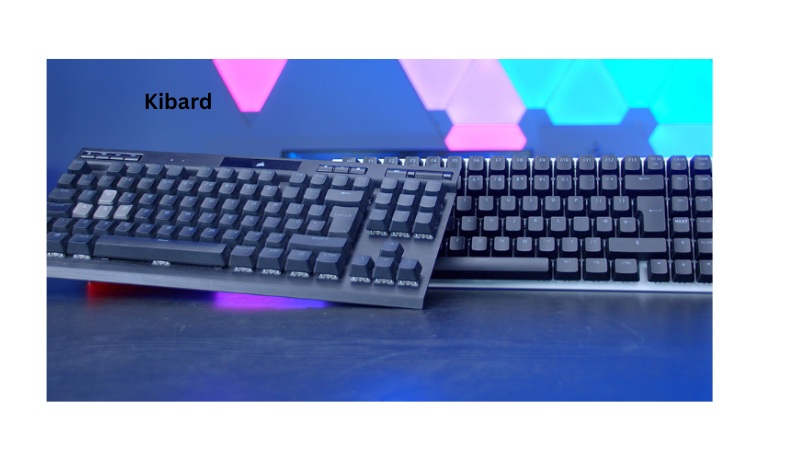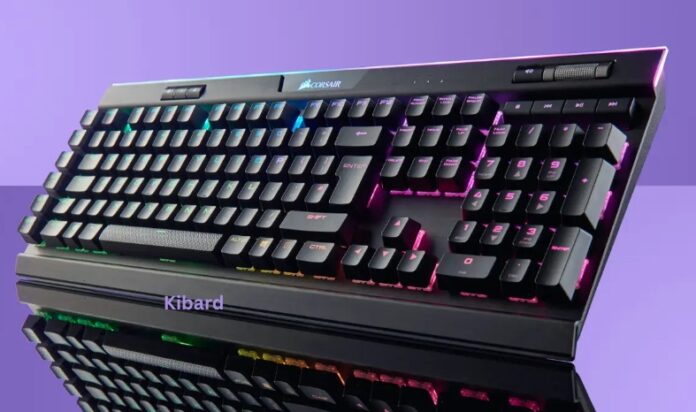Have you ever been typing quickly and found a strange word in your text? It happens to the best of us. One such word that frequently appears is “Kibard.” While it might look like a new tech term or a brand name, its origin is much simpler. “Kibard” is most often a common misspelling of the word “keyboard,” an essential tool we use every single day to interact with our digital world.
This article will explore the term Kibard in detail. We will cover why this typo happens, delve into the world of actual keyboards, and even touch on how this simple mistake impacts things like search engine results and user experience. Whether you landed here by accidentally typing Kibard or are simply curious, this guide will provide a thorough understanding of the device that connects us to our computers, a device often mistyped as a Kibard. We will explore its history, the different types available, its wide-ranging applications, and what the future holds for this indispensable piece of technology.
Unraveling the Mystery: Why Does “Kibard” Happen?
The confusion between “Kibard” and “keyboard” is an interesting example of how our brains and fingers sometimes fail to sync perfectly. The reasons behind this common typographical error are multifaceted.

The Phonetic Similarity
The primary reason for the “Kibard” typo is how the word is pronounced. The sounds of “keyboard” and “Kibard” are remarkably similar. When we speak quickly, the subtle “o” sound can get lost, making it sound more like “Kibard.” This is especially true for voice-to-text software, which can easily misinterpret the spoken word and transcribe it incorrectly. As these technologies become more integrated into our daily lives, phonetic mistakes like this become more prevalent.
A Simple Slip of the Fingers
Another major cause is simple typing error. The letters ‘o’ and ‘a’ are not adjacent on a standard QWERTY layout, but fast or inaccurate typing can lead to mistakes. Think about how many words you type in a day. It’s statistically probable that some errors will occur, and “Kibard” is a frequent one. Repetitive strain or simply a moment of distraction can lead your fingers to hit the wrong keys. This highlights the human element in our digital interactions.
The Impact on Search and SEO
This common mistake has a tangible effect on the digital landscape. Search engines are smart enough to recognize “Kibard” as a likely typo for “keyboard” and will often provide results for the correct term. However, content creators and SEO specialists sometimes optimize for common misspellings to capture that specific traffic. If someone is searching for a product and types “Kibard,” a company that has included this term in its product description might appear higher in the results for that specific query. This is a niche SEO strategy known as typo-squatting or targeting “fat-finger” traffic.
The Evolution of the Keyboard (Not the Kibard)
To truly appreciate the tool often misspelled as Kibard, we need to look at its rich history. The modern keyboard didn’t just appear out of nowhere; it’s the product of over a century of innovation, tracing its roots back to the typewriter.
From Typewriters to Terminals
The story begins in the 19th century with the invention of the typewriter. The QWERTY layout, which we still use today, was designed by Christopher Latham Sholes. The layout’s purpose was not speed but to prevent the mechanical arms of early typewriters from jamming by placing commonly used letter pairs far apart.
When the first computers emerged, they needed an input method. The typewriter keyboard was the natural choice. Early computer keyboards were large, heavy, and mechanical, producing a loud, clacky sound with each keystroke. These were integrated into computer terminals that connected to mainframe computers.
The Personal Computer Revolution
The rise of personal computers in the 1980s and 1990s brought the keyboard into homes and offices worldwide. This era saw significant changes in keyboard design. The bulky mechanical models gave way to quieter and more affordable membrane keyboards, which use a flexible layer under the keys to register a press. This is the technology still used in most standard office keyboards today. The concept of a “Kibard” didn’t exist, but the foundation for its eventual misspelling was being laid with every new user.
Modern Innovations and Specializations
Today, the keyboard market is incredibly diverse. We’ve moved beyond a one-size-fits-all approach to a world of specialized devices tailored to specific needs.
The Mechanical Keyboard Renaissance
In recent years, mechanical keyboards have seen a massive resurgence in popularity, especially among gamers, programmers, and writers. Unlike membrane keyboards, mechanical models have an individual switch under each key. This provides superior tactile feedback, durability, and customization. Users can choose from different switch types (e.g., Cherry MX, Gateron) that offer varying levels of clickiness and actuation force. While someone might search for a “mechanical Kibard,” they are really looking for this premium typing experience.
Ergonomics and Wireless Freedom
Ergonomic keyboards are designed to reduce strain and prevent repetitive stress injuries. They often feature a split design, a curved shape, or tenting options to promote a more natural hand and wrist posture. For those who value a clean and flexible workspace, wireless keyboards connect via Bluetooth or a USB dongle, eliminating cable clutter.
Exploring the Different Types of Keyboards
When you search for a “Kibard,” you’re likely looking for a specific type of keyboard. The variety can be overwhelming, so let’s break down the main categories to help you understand what might be the best fit for your needs.
Mechanical vs. Membrane Keyboards
This is the most fundamental distinction in the keyboard world.
- Mechanical Keyboards: Praised for their satisfying feel and longevity. Each key has its own switch, making them highly responsive and durable. They are a favorite for gaming and intensive typing but are generally louder and more expensive.
- Membrane Keyboards: These are the standard for most office and budget keyboards. They use a rubber dome membrane that pushes on a circuit layer. They are quiet, affordable, and spill-resistant but offer a mushier feel and are less durable than their mechanical counterparts.
Form Factors and Layouts
Keyboards come in various sizes, known as form factors.
- Full-Size (100%): The traditional keyboard with a full number pad on the right.
- Tenkeyless (TKL or 80%): A full-size board without the number pad, making it more compact.
- 75% and 65%: Even more compact layouts that condense the arrow keys and navigation cluster.
- 60%: A highly compact form factor that removes the function row and arrow keys, relying on function layers for that input.
Beyond the common QWERTY layout, there are others like AZERTY (used in France) and Dvorak, which is designed for typing efficiency. Anyone searching for a specific layout might accidentally use the term Kibard.
Gaming, Ergonomic, and Virtual Keyboards
- Gaming Keyboards: These are high-performance devices, often mechanical, featuring customizable RGB lighting, programmable macro keys, and low-latency connections for a competitive edge.
- Ergonomic Keyboards: As mentioned, these focus on comfort and injury prevention with unique, contoured designs.
- Virtual Keyboards: These are the on-screen keyboards we use on our smartphones and tablets. While they lack tactile feedback, their convenience and portability are unmatched for mobile devices.
The Role of the Keyboard in Our Daily Lives
The keyboard, or Kibard as it’s sometimes typed, is more than just a peripheral. It’s a fundamental tool for productivity, communication, and creativity.
- In the Workplace: From writing emails and reports to entering data and coding, the keyboard is the primary input device for most professional tasks. An efficient and comfortable keyboard can directly boost productivity.
- For Education: Students rely on keyboards for research, writing essays, and participating in online learning. Digital literacy, which includes proficient typing, is a crucial skill in modern education.
- In Gaming and Entertainment: For PC gamers, the keyboard is part of a critical duo with the mouse. The speed and accuracy of a gaming Kibard can be the difference between winning and losing.
- For Communication and Creativity: We use keyboards to connect with friends and family through social media and messaging apps. For writers, bloggers, and content creators, the keyboard is the bridge between an idea and its expression. A good Kibard is a writer’s best friend.
The Future of the Kibard and Human-Computer Interaction
While the physical keyboard has remained remarkably consistent for decades, technology is always moving forward. Voice commands, gesture controls, and even brain-computer interfaces are emerging as new ways to interact with our devices. Does this mean the end is near for the trusty keyboard?
Probably not. While these new technologies will find their place, the keyboard offers a level of speed, precision, and tactile satisfaction for text entry that is difficult to replicate. The future is more likely to be a hybrid model where we use the best tool for the job.
We may see keyboards become even more integrated into our environments, perhaps embedded in smart desks or flexible, rollable surfaces. AI-powered features, like predictive text and automated macros, will also make the keyboard an even smarter tool. The humble device, even when misspelled as Kibard, is set to evolve rather than disappear. It will continue to be a central piece of our digital toolkit for the foreseeable future. The next time you see the word Kibard, you’ll know the full story behind the typo and the powerful device it represents.
Frequently Asked Questions (FAQs)
- What is a Kibard?
A Kibard is not a specific product or technology. It is a very common misspelling of the word “keyboard,” usually resulting from a simple typing error or a misinterpretation by voice-to-text software due to their similar pronunciations. - Why do people search for the term “Kibard”?
People search for “Kibard” almost always by accident when they intend to search for “keyboard.” They may be looking to buy a new keyboard, find troubleshooting tips, or learn about different types of keyboards and simply make a mistake while typing. - Is there any difference between a Kibard and a keyboard?
No, there is no functional difference. The term “Kibard” refers to a keyboard. If you purchase a product listed as a “Kibard,” you will receive a standard keyboard. The different spelling is just an error. - Can using the term Kibard affect my search results?
Most modern search engines like Google are sophisticated enough to recognize “Kibard” as a typo and will automatically show you results for “keyboard.” However, you might occasionally see results from websites that intentionally use the misspelling to attract this accidental traffic.
5. How can I choose the right keyboard for my needs?
To choose the right keyboard, consider your primary use. For gaming, a mechanical keyboard with fast switches is ideal. For office work, a quiet membrane or ergonomic keyboard may be better. For portability, consider a compact or wireless model. It’s always best to try a few types if possible to see what feels most comfortable for you.
